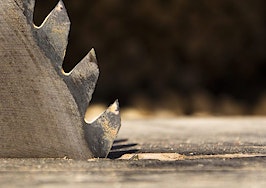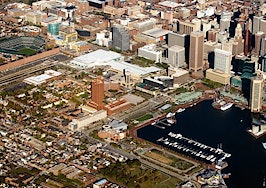- Proposed redevelopments are spread throughout the city.
- Roughly 4,000 vacant homes could soon be torn down via a blight-elimination program.
- The Port Covington redevelopment should be the largest in the city moving forward.
Judging by its volume of potential projects, Baltimore appears to be a market prime for redevelopment.
In the coming years, a group of redevelopment deals should be underway that feature small to large residential components, typically via the construction of mixed-use buildings.
Redevelopment projects spread throughout the city
In the city’s Little Italy neighborhood, an entire block comprising 19,000 square feet is being listed on an off-market basis.
The block, which is located east of the city’s CBD, has approved zoning for a nine-story multifamily development with ground floor retail. The site’s zoning is also said to allow for minimum sized, market rate units of 750 square feet. This minimum drops down to 370 square feet if the units are part of a senior housing development.
On Wednesday, Baltimore’s spending panel was expected to approve a memorandum of understanding with the state for $700 million to tear down 4,000 vacant homes. This large scale tear down is part of Maryland Governor Larry Hogan’s blight-elimination program, which is intended to transform blighted sections of the city.
The Port Covington area of the city is slated for a major facelift, as Kevin Plank, founder of Under Armour, and his real estate arm Sagamore Development have submitted plans to the city for a mixed-use waterfront development that would utilize 240 acres and create roughly 13 million square feet of residential, office, retail, restaurant and other commercial space.
The catalyst of the project is Under Armour’s new, 50-acre campus, which is already underway. The finishing touches are being put on the campus’ first building, which is a retrofit on an Old Sam’s Club.
In the coming months, members of the city’s Urban Design and Architecture Review Panel will review smaller sections of the Port Covington plans.
In east Baltimore another industrial site, which was the former home of Pemco International Corp., is slated to be redeveloped into a mixed-use development. The proposed project is currently in the environmental approval stage.
In northeast Baltimore, a proposed $50 million redevelopment of a shopping center is meeting resistant from nearby residents and State Senator Joan Carter Conway over its student housing component. The site is adjacent to several Morgan State University buildings, which explains why a 350-bed project is part of the proposed development.









